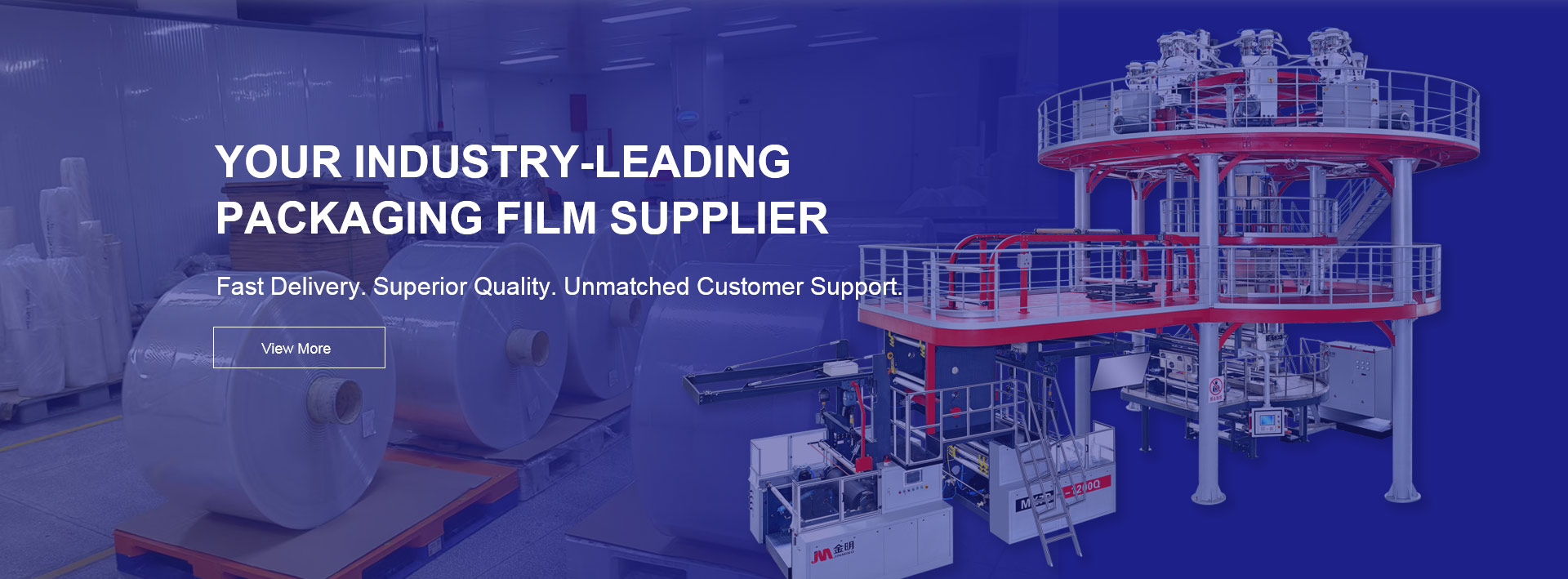
Choosing the right forming and non-Forming Film is one of the most important decisions for ensuring stable operation, consistent sealing and reliable food protection in automatic packaging lines. As different machines operate with varying vacuum levels, stretch requirements and barrier needs, the film must match both the product and the equipment. This article explains how to evaluate materials, thicknesses, performance indicators and machine compatibility so that manufacturers can achieve efficient, secure and cost-effective packaging. For companies needing stable-quality packaging materials, suppliers such as JINBORUN provide multiple grades of high-performance films suitable for food processing lines.
Forming film is the bottom web used in thermoforming or vacuum forming machines. It softens when heated and stretches to create a cavity that holds meat, seafood, cheese, pasta, vegetables or ready-to-eat meals. The film requires strong mechanical strength and controlled deformation so it shapes consistently without thinning excessively.
Non-forming film is the top web, sealed to the shaped bottom layer to complete the package. It does not stretch and must provide high clarity, sealing stability and barrier performance. The combination of both layers determines the package shelf life, appearance and resilience during transportation.
Forming films are commonly made from PA/PE, APET/PE or other multilayer structures engineered for uniform heating and deep drawing. Non-forming films often focus on transparency, sealability and oxygen or moisture protection.
Selecting a forming film involves balancing formability, protection and machine efficiency. The following indicators help determine the correct grade for your packaging machine.
Different machines offer specific forming depths, from shallow trays to deep pockets exceeding 100 mm. Films with higher PA content or APET composites provide better drawability. A mismatch leads to uneven stretching, thinning or breakage during forming.
Forming requires the film to stretch while maintaining uniform thickness. Tensile strength, typically measured in MPa, ensures the film withstands mechanical force during deep drawing. For heavy items such as bone-in meat, a higher-strength structure reduces puncture risk.
Forming films must heat uniformly without warping. Materials like multilayer PA/PE maintain dimensional stability across wide temperature ranges. Good thermal stability helps avoid wrinkles, poor forming lines or unstable cavities.
For products sensitive to oxygen or moisture, barrier layers such as EVOH are often added. This slows lipid oxidation, microbial growth and moisture loss. As packaging equipment pulls vacuum before sealing, consistent barrier levels directly affect shelf life.
Films typically range from 150 to 500 microns. Thicker films support deeper forming and protect heavy or sharp products. Thinner options suit lightweight or small goods. Choosing the correct thickness improves efficiency and reduces unnecessary material cost.
Non-forming films complete the sealing stage, so their properties must match the forming film and machine sealing system.
Sealing performance is the core requirement. The top web must bond cleanly to the formed bottom web under specific temperature and pressure ranges. Multilayer PE sealing layers provide stable sealing even when the sealing surface has minor contamination such as moisture.
For retail-packed meat, cheese and ready meals, high clarity enhances product appeal. PET-based or high-gloss PA/PE non-forming films offer strong visibility while maintaining durability.
Products like seafood shells, bones or frozen foods require robust top films. Reinforced barrier structures help reduce leaks caused by product movement during transportation.
Machines use different sealing tool designs, heating systems and cutting shapes. Non-forming films must maintain stable sealing speed and avoid shrinkage or curling under machine temperatures.
To maintain consistent shelf life, the top web must match the bottom web’s barrier levels. Using films with incompatible oxygen or moisture resistance causes uneven aging and premature spoilage.
| Film Type | Typical Structure | Strength | Barrier Level | Use Case |
|---|---|---|---|---|
| Forming Film | PA/PE | Medium–High | Medium | Meat, cheese, pasta |
| Forming Film | APET/PE | High | Medium | Deep-draw, rigid items |
| High-Barrier Forming | PA/EVOH/PE | High | High | Fresh meat, seafood |
| Non-Forming Film | PET/PE | Medium | Medium | Clear retail packs |
| High-Barrier Non-Forming | PA/EVOH/PE | High | High | Modified atmosphere packaging |
The film must always be matched to both the packaged item and the machine’s forming and sealing specifications. Frozen foods require higher puncture resistance, while fresh foods require consistent oxygen control. High-speed lines need films with stable heating curves to prevent wrinkles or incomplete sealing.
Manufacturers should provide machine drawings, forming depth, heating temperature profiles and product characteristics when consulting film suppliers. Reliable suppliers such as JINBORUN offer tailored multilayer films that optimize forming shape, sealing quality and shelf life.
Wrinkling can occur if the forming film softens unevenly or if the heating time is too short. Weak seals result from incompatible sealing layers or improper tension control. Premature cracking usually indicates insufficient tensile strength or incorrect thickness. Selecting the correct grade eliminates most of these issues.
Choosing the right forming and non-forming films directly affects production efficiency and food safety. Evaluating forming depth, tensile strength, sealability, barrier requirements and machine compatibility ensures stable packaging performance. Working with dependable film suppliers such as JINBORUN can help streamline material selection, reduce trial-and-error and maintain a consistent packaging standard for long-term operation.